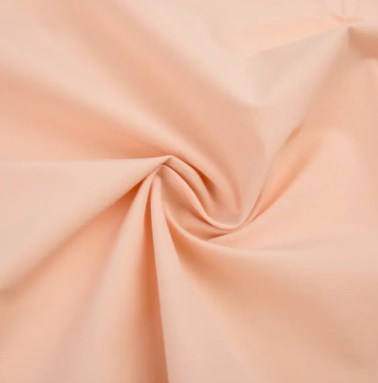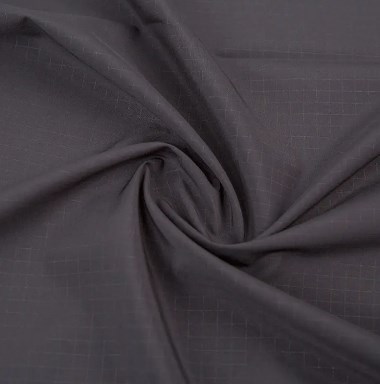No. 116, Building 7, Boutique Commercial Area, Shengze Town, Wujiang District, Suzhou City, China.
With growing global environmental awareness, sustainable fabric has become one of the most talked-about keywords in the textile industry. With resource crises and intensifying environmental pollution, the traditional textile industry is undergoing a profound transformation. Sustainable fabrics, centered on green manufacturing and environmentally friendly concepts, are a key component of this transformation. They not only represent the recycling and reuse of materials but are also an inevitable choice for the fashion industry, home furnishings, industrial textiles, and other sectors striving for ecological responsibility.
Definition and Core Concepts of Sustainable Fabrics
Sustainable fabrics refer to textile materials that minimize environmental impact, reduce carbon emissions, and achieve resource recycling throughout their raw material sourcing, production processes, lifecycles, and recycling processes. The core concept of this type of fabric lies in comprehensive green management from source to recycling, focusing not only on the ecological origin of the fiber but also on water and energy consumption, as well as the reusability of post-consumer waste. Compared to traditional textile materials, the greatest value of sustainable fabrics lies in achieving a balance between production and nature, allowing fashion and environmental protection to coexist.
This concept not only protects the ecosystem but also extends a sustainable economic model. By adopting renewable raw materials and low-carbon processes, textile companies can effectively reduce industrial wastewater and chemical residues while enhancing their brand's social responsibility image. Against the backdrop of global carbon neutrality goals, the use of sustainable fabrics has become a key indicator of companies' participation in international competition.

Raw Material Innovation: A Green Transformation from Natural to Circular
The development of sustainable fabrics is inseparable from innovation in raw materials. Fiber selection is the foundation of sustainable development, encompassing not only ecological cultivation or recycling but also the research and development and utilization of bio-based materials. Ecological cultivation models for natural fibers, regeneration systems for synthetic fibers, and the development of biodegradable fibers are all driving the optimization of sustainable fabric structures.
Modern textile manufacturers are leveraging biotechnology and recycling technologies to develop a new raw material system that allows textile fibers to be recyclable even after production. This process not only reduces dependence on fossil energy but also promotes the resource reuse of discarded textiles. For example, some textile materials can be chemically decomposed and reassembled to achieve fiber regeneration and circular production, thus forming a "closed-loop" green industrial chain.
Green Processes: A Key Component of Low-Carbon Manufacturing
Another key aspect of sustainable fabrics lies in the green transformation of the production process. Textile manufacturing has traditionally been a high-energy-consuming and high-emissions industry. Low-carbon, energy-saving, and harmless production methods are key to achieving sustainable goals. The emergence of modern technologies such as water-saving dyeing and finishing, solvent-free coating technology, and digital printing and dyeing controls has enabled sustainable fabrics to achieve a new balance between performance and environmental friendliness.
Optimizing production processes not only improves energy efficiency but also reduces the use of dyes and auxiliaries, reducing wastewater discharge and chemical pollution. Furthermore, through intelligent manufacturing and digital monitoring systems, companies can precisely control production parameters and maximize raw material utilization. The promotion of green processes not only reflects environmental requirements but also serves as a key driver of technological advancement in the industry, enabling sustainable fabrics to achieve both high quality and ecological benefits.
The Performance and Application Value of Sustainable Fabrics
In terms of performance, sustainable fabrics do not sacrifice quality. Thanks to advances in new material technologies, these fabrics have significantly improved durability, comfort, breathability, and aesthetic appeal. Innovations in fiber molecular structure design, weaving density optimization, and finishing technologies have enabled sustainable fabrics to not only offer excellent performance but also possess rich tactile and visual appeal. They are widely used in fashion, sportswear, home decor, automotive interiors, and industrial fabrics.

The market value of sustainable fabrics is also becoming increasingly prominent. With rising consumer awareness of environmental protection, green textile products are becoming a key consideration in purchasing decisions. By incorporating sustainable fabrics, brands can not only increase product value but also establish a distinctive environmental image in a highly competitive market. This "environmental is fashion" concept is becoming a mainstream trend in the global fashion industry.
Sustainable Transformation Trends in the Textile Industry
The development of sustainable fabrics is driving systemic transformation across the textile industry. More and more companies are prioritizing raw material traceability and supply chain transparency, ensuring that every step of the product chain, from raw material sourcing to finished product delivery, meets environmental standards. Furthermore, the promotion of the circular economy model in the textile industry has significantly increased the reuse rate of waste textiles, creating a closed-loop resource cycle and increasing economic benefits.
In the long run, sustainable fabrics will become a core driving force behind the textile industry's green transformation. Whether it's technological innovation, brand strategy, or policy guidance, they are all collectively shaping a new industrial system oriented towards ecological responsibility. The establishment of international standards and the improvement of certification systems have also laid the foundation for the global application of sustainable fabrics, making them a key indicator of a company's environmental protection capabilities.
"Sustainable fabrics" is not only a synonym for environmentally friendly materials, but also a future-oriented industrial concept. It allows the textile industry to shoulder the responsibility of protecting the earth while pursuing beauty and functionality. From recycled raw materials to low-carbon innovation in production processes, from shifting consumer attitudes to green collaboration in the global supply chain, sustainable fabrics are steadily leading the textile industry into a new era of greater environmental protection, efficiency, and intelligence.
 English
English
 中文简体
中文简体
 Español
Español


